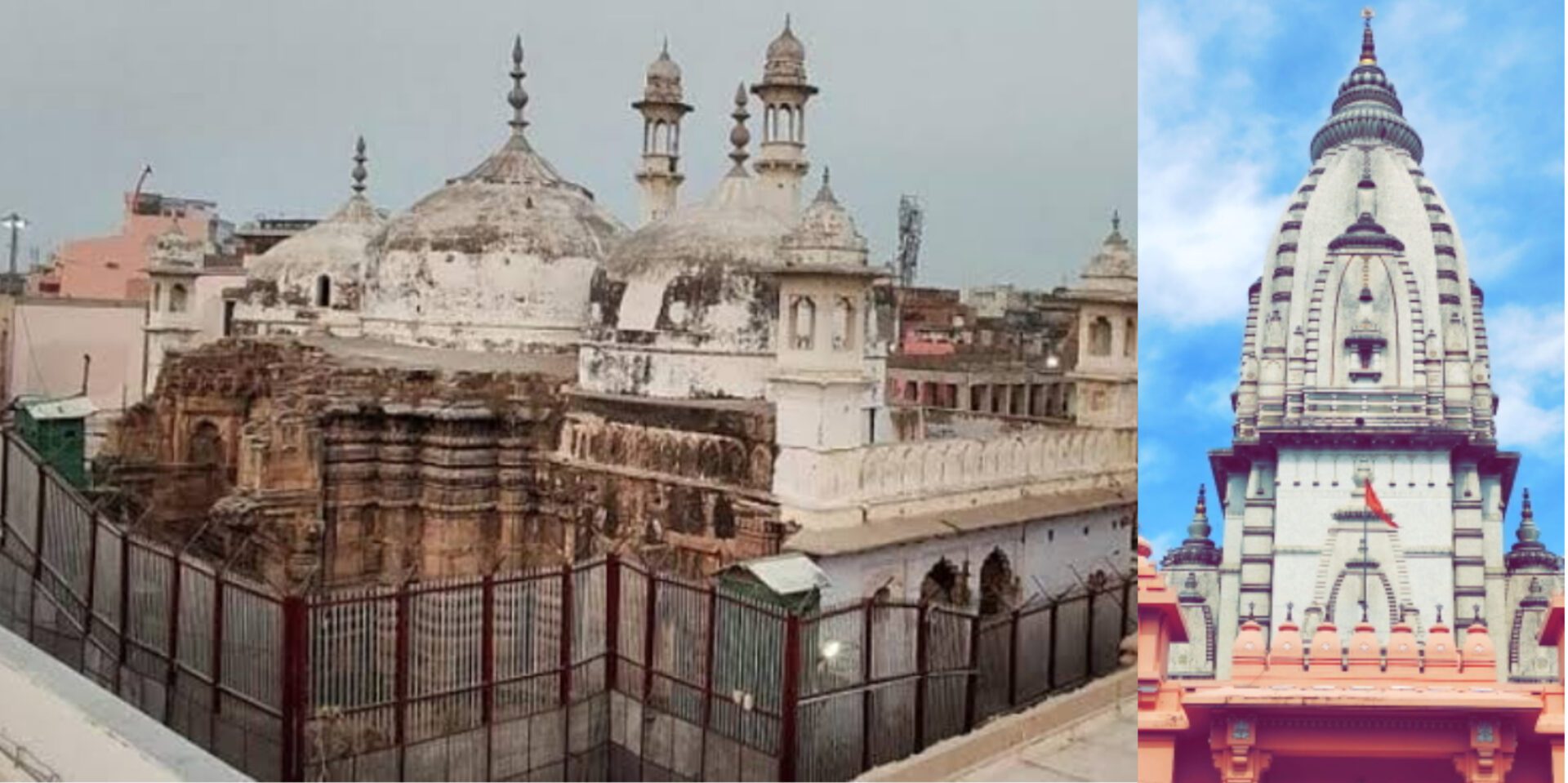Recently, there has been a lot of hue and cry over the issue of Kashi Vishwanath temple. Some days back a sadhu from Gujarat who was visiting Varanasi began an indefinite fast when police stopped him from worshipping the supposed Shivalinga unearthed on the premises of the Gyanvapi mosque.
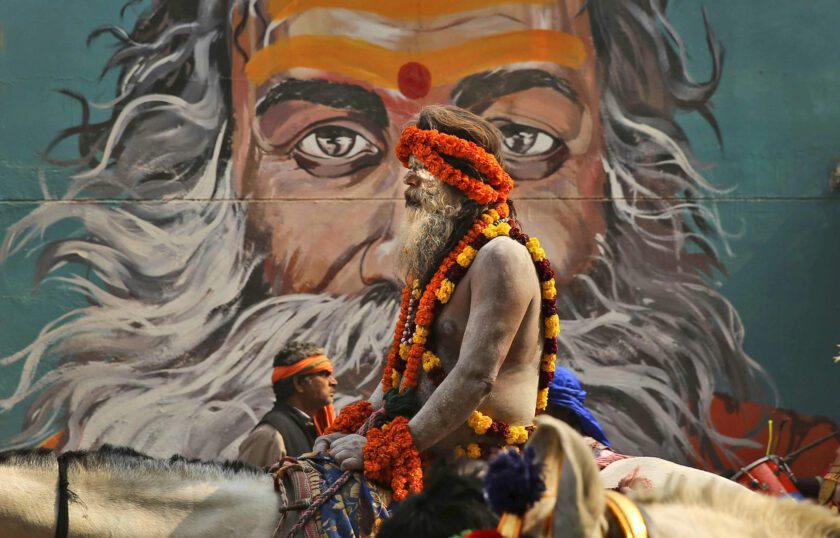
It was later revealed that the sadhu had hired a lawyer to file a plea with the Varanasi district court, requesting that any Brahmin should be allowed to pray before the Shivalinga. The court will determine whether or not to admit this request. The monk’s activities have fueled a Hindutva campaign — both inside and outside of courtrooms — for the handover of the Gyanvapi grounds, based on the claim that the mosque was built after elements of the old Kashi Vishwanath temple were demolished.

In this background of a lot of debate in the country on this issue of Kashi Vishwanath temple, we take a detailed look at how and when the temple was demolished and how a mosque was built in its place.
The Kashi Vishwanath temple’s present structure was built in the 1780s which means that its structure is older than 200 years. This shrine holds immense significance for Hindus because it is devoted to Lord Shiva. The interesting part about Kashi Vishwanath temple is that it has been demolished several times. Author Dr Motichandra delves into the nuances of the subject in his famous work on the history of Varanasi, ‘Kashi ka itihas’ (The history of Kashi).
UNDER QUTUBUDDIN AIBAK
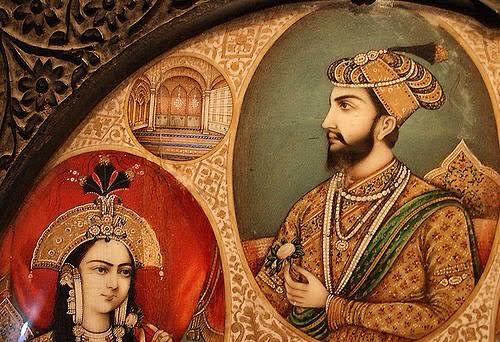
According to Dr Motichandra, the Vishwanath temple was demolished for the first time under the reign of Qutubuddin Aibak. In the year 1194, Aibak conquered Varanasi. This subject is also discussed in depth in Om Prakash Kejariwal’s book “Kashi Nagari Ek: Roop Anek.”
The Vishwanath temple was originally demolished during the reign of Aibak, according to Dr Motichandra. During this time period, several temples were demolished and mosques were built in their place. The lowest half of the Dhai Kangure ki Masjid on the way from Daranagar to Hanuman Fatak is made of Hindu temple ruins.
The remnants of demolished temples were used to construct the northern and western sides of Maqdoom Sahab’s graveyard in Gulzar area. Similarly, the mosque at Bhadaun was constructed on the ruins of demolished temples. During Qutbuddin Aibak’s rule, Hinduism was subjected to severe attacks.
But these were lessened by the time Iltutmish took power. During his reign, Hindus and the local business sector bribed royal officers to resume religious activity in Kashi, and temples began to spring up in the area in 1296. The Vishwanath temple was also rebuilt around this time.
UNDER MAHMUD SHARQUI
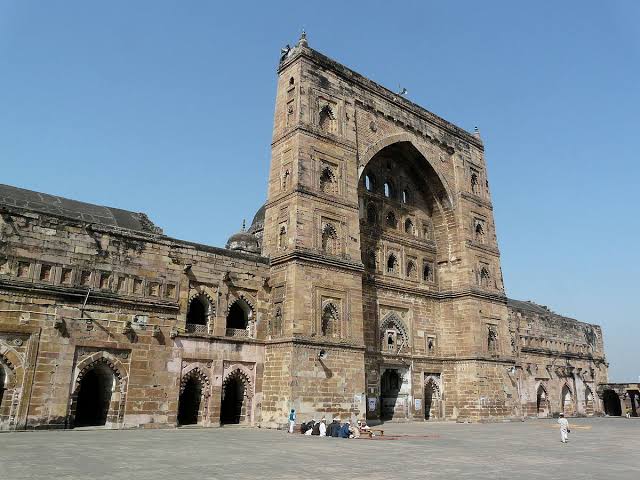
When the Sharqi dynasty established itself in Jaunpur, Banaras’ difficulties reappeared. Firoz Shah Tughlaq established Jaunpur in 1359-60. However, Khwajah-i-Jahan Malik Sarwar, who rebelled against Nasiruddin Muhammad Tughluq, established an independent Sultanate in Jaunpur. During his reign from 1436 until 1458, Mahmud Sharqi, a descendant of Malik Sarwar, who rose from a wazir to become an independent monarch, began demolishing temples in Banaras once more. During this time, the Vishwanath temple was also demolished.
The temple was restored some 125 years after the second demolition. Gobardhan Das, Raja Todarmal’s son, gets the credit this time. Todarmal was an Akbar courtier who is credited with establishing a strong revenue system. According to Dr. Motichandra, Gobardhan Das renovated the Vishwanath temple about 1585 on his father’s directions. Todarmal’s guru, Narayan Bhatt, persuaded him to rebuild the Vishwanath temple following a military victory in Munger in 1580. Bhatt was a famous scholar from southern India who had been in Kashi for a long time.
UNDER AURANGZEB
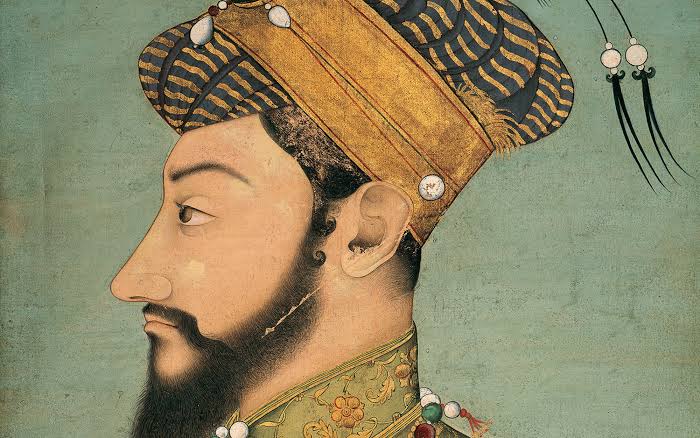
Within nine decades, the Vishwanath temple, which Gobardhan Das and Narayan Bhatt rebuilt according to Todarmal’s wishes, bore the brunt of Aurangzeb’s prejudice. After Shahjahan’s illness in 1658, all four of his sons began competing for control of the empire. After conquering his brothers Shuja and Dara, Aurangzeb was able to claim the throne. The first years of Aurangzeb’s reign were tumultuous, and most people despised him. On the one side, he had seized the kingdom while his father was still alive, imprisoned his father Shahjahan, and ruthlessly murdered his brothers.
Aurangzeb’s intolerance was not on full show during the first eight to ten years of his rule. On the contrary, in order to rehabilitate his image, he gave land to temples in various places and awarded mahants special personal leases on large swaths of land. This, however, was really a ruse. His harsh visage was shown to the world within a decade of assuming power.
According to Aurangzeb’s contemporary historian Saqi Musta’idd Khan the emperor learned that in Banaras, the “stupid Brahmins” teach their worthless book in schools, and both Hindu and Muslim students come to these schools from far off areas to acquire this “satanic knowledge.”
They were given severe directives to prohibit all forms of idol worship as well as the teachings of religious books related to idol worship. The emperor learned in Rabi-ul-Akhir (2 September 1669) that his staff had demolished the Vishwanath temple in Banaras on his orders.
According to Dr. Motichandra, not only was the Vishwanath temple demolished, but the Gyanvapi mosque was also built over the temple’s ruins. The mosque’s builders demolished the previous temple’s western wall, as well as several smaller temples.
The spires on the gateways were torn down and replaced with a dome, and the western, northern, and southern gates were closed. The mosque’s main courtyard was converted from the sanctum sanctorum. All four anterooms were spared, and halls were excavated out of a 24 foot square to connect them with pavilions. The temple’s eastern side was removed and replaced with a courtyard with antique pillars still surviving.
POLARISED VIEWS ON AURANGZEB’S ADMINISTRATION
Some fanatic groups hail the same Aurangzeb who demolished the Vishwanath temple and built the Gyanvapi mosque on its site as an able Islamic administrator, and there is a section of historians who shamelessly tries to tell his story in a different way in order to avoid shedding any light on his bigotry.
Dr. Pattabhi Sitaramayya, a great independence fighter and Congress stalwart, featured such a ruse in his famous book ‘Feathers and Stones.’ “When he was in the height of his fame, Aurangzeb used to have vast numbers of Hindu courtiers in his company when he set out on his voyage,” writes Omprakash Kejariwal. All of these courtiers went to Banaras to view the temple.
They were also joined by the Kutch queen. When they all emerged from the temple after darshan, they discovered that the queen had vanished. They looked for her everywhere, but she was nowhere to be found. Finally, after a more thorough investigation, they discovered a basement beneath a two-story temple structure with its doors shut from the inside. They discovered the queen disrobed and trembling in the basement after bursting the doors open. They later learned that the mahanths of that place used to bring wealthy and jewelled people to this cellar under false pretences in order to rob them of their possessions.
What they did with their lives was unknown. Whatever the case may have been, the hunt for it was quick and vigorous, leaving little time for any crime to be committed. When Aurangzeb learned of the priests’ act of looting, he declared, “A location where such looting occurs cannot be the abode of gods.” He promptly ordered the building to be demolished. The command was instantly carried out, and the temple was quickly demolished. Later, the queen, who had been saved, begged for a mosque to be built where the temple had once stood, and her desires were granted.”
The willingness to demolish the Vishwanath temple, erect a mosque in its place, and then fabricate a story about the Kutch queen to justify the whole thing reveals the same mentality that tries to hide or justify the mediaeval Muslim rulers and emperors’ bigotry and atrocities against their Hindu subjects.
In his book, Sitaramayya acknowledges that the Muslim narrator of this event was unable to present any proof in favour of his story, and that it was only hearsay.
It is unimaginable that the queen, on her trip to Hinduism’s holiest city, would request that the city’s most important temple be razed and replaced with a mosque.
According to Krutarthsinh Jadeja, a well-known researcher of Kutch history who is also linked to the Maharao dynasty, there is no record of a queen of Kutch accompanying Aurangzeb on a pilgrimage to Banaras and no mention of her pushing him to build a mosque on the same site where a temple once stood. According to Krutarthsinh, Kutch was so isolated geographically that making a pilgrimage to Dwarka, a nearby town, was impossible, and going to Banaras was unfathomable.
RESURRECTION OF THE TEMPLE UNDER MARATHA RULE
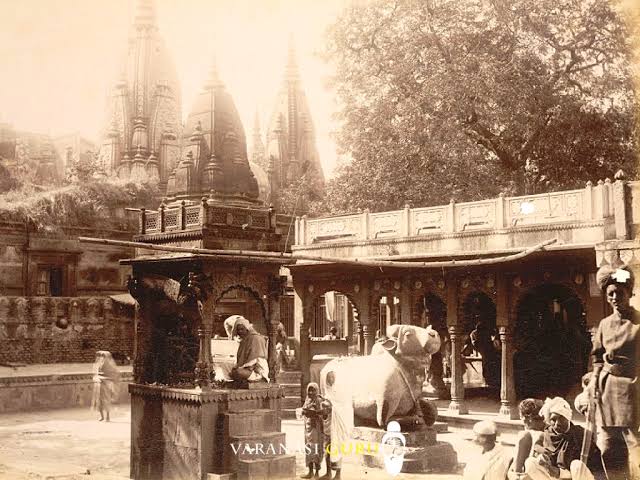
However, following Aurangzeb’s reign, Mughal dominance began to wane, and Maratha power rose to prominence, prompting efforts to reconstruct the temple to resume. The rulers of Reewa and Mewar, as well as Nana Fadnavis, took part. Finally, Ahilyabai Holkar, the queen of Indore, was credited with reconstructing the temple. The fervent nationalist and pious Ahilyabai purchased land in the Gyanvapi area and obtained permission from the Nawab of Awadh to rebuild the temple. The Vishwanath temple was rebuilt in 1777 on the day of Janmashtami.
According to the book Kashi Granth, written by Om Prakash Kejariwal, the Brahmins were scared of the atrocities committed against them during the Sultanate and Mughal periods, and so stayed away from any portion of Ahilyabai Holkar’s reconstruction of the Vishwanath temple. In this situation, Ahilyabai was forced to bring a priest from Maheshwar, her own capital, to perform the Pran Pratishtha rite. The temple’s first priest was a Tarapur-based Bhoomihar Brahmin. The temple’s sanctum sanctorum was exactly as it had been in ancient times.
The temple’s two spires were decorated with gold presented by Maharaja Ranajit Singh of Punjab. In 1839, he gave approximately 821 kg of gold. Many people afterwards contributed to the construction of this temple. The growth of Kashi Vishwanath temple took a new turn in 2014, after Narendra Modi won elections from the Varanasi parliamentary constituency and became Prime Minister, and it has now become a grand destination. The temple’s surrounding region has been rebuilt in recent years, which has contributed to its beauty. The construction of a Vishwanath Corridor has resulted in a bigger influx of tourists and devotees from around the country and overseas.
However, the Gyanvapi mosque, which was built after the previous temple was demolished, has created a profound wound that is still open. The case is currently in court. As a result, several remains of the original Vishwanath temple have emerged since the most recent assessment of the site was completed. As can be seen, those on the Muslim side are also very combative about this issue because they know that if restoration work on old temples that were replaced by mosques begins, thousands of temples will be reestablished that were razed during the country’s 800-year-long Muslim rule, with evidence strewn about. Gyanvapi is a well-known example of this.
Frequently Asked Questions :-
1) What is the story of Gyanvapi Mosque?
The site had a Vishweshwar temple devoted to the Hindu deity Shiva. It was built by Todar Mal , a premier courtier and minister of Akbar, in conjunction with Narayana Bhatta, a pre-eminent Brahmin scholar of Banaras from Maharashtra, during late 16th century.
2) Who built Kashi Vishwanath temple?
Rani Ahilyabai Holkar of Indore
The present Kashi Vishwanath Temple was built in the 18th century by Rani Ahilyabai Holkar of Indore, immediately to the south of the mosque. Over the decades it emerged as one of the most prominent and revered centres of the Hindu religion.
3) Why is Kashi Vishwanath temple sacred?
Also known as the Golden Temple, it is dedicated to Lord Shiva, the presiding deity of the city. Varanasi is said to be the point at which the first jyotirlinga, the fiery pillar of light by which Shiva manifested his supremacy over other gods, broke through the earth’s crust and flared towards the heavens.
4) Which God is Worshipped in Kashi Vishwanath temple?
Lord Shiva
The Kashi Vishwanath Temple is a famous Hindu temple dedicated to Lord Shiva. It is located in Vishwanath Gali of Varanasi, Uttar Pradesh in India.

